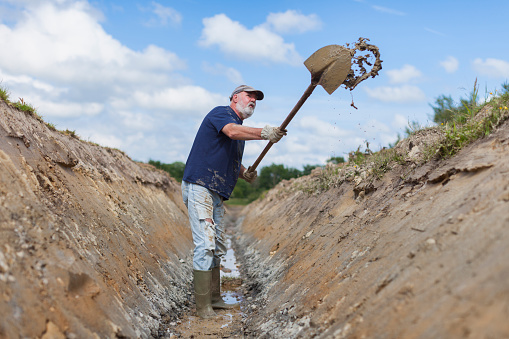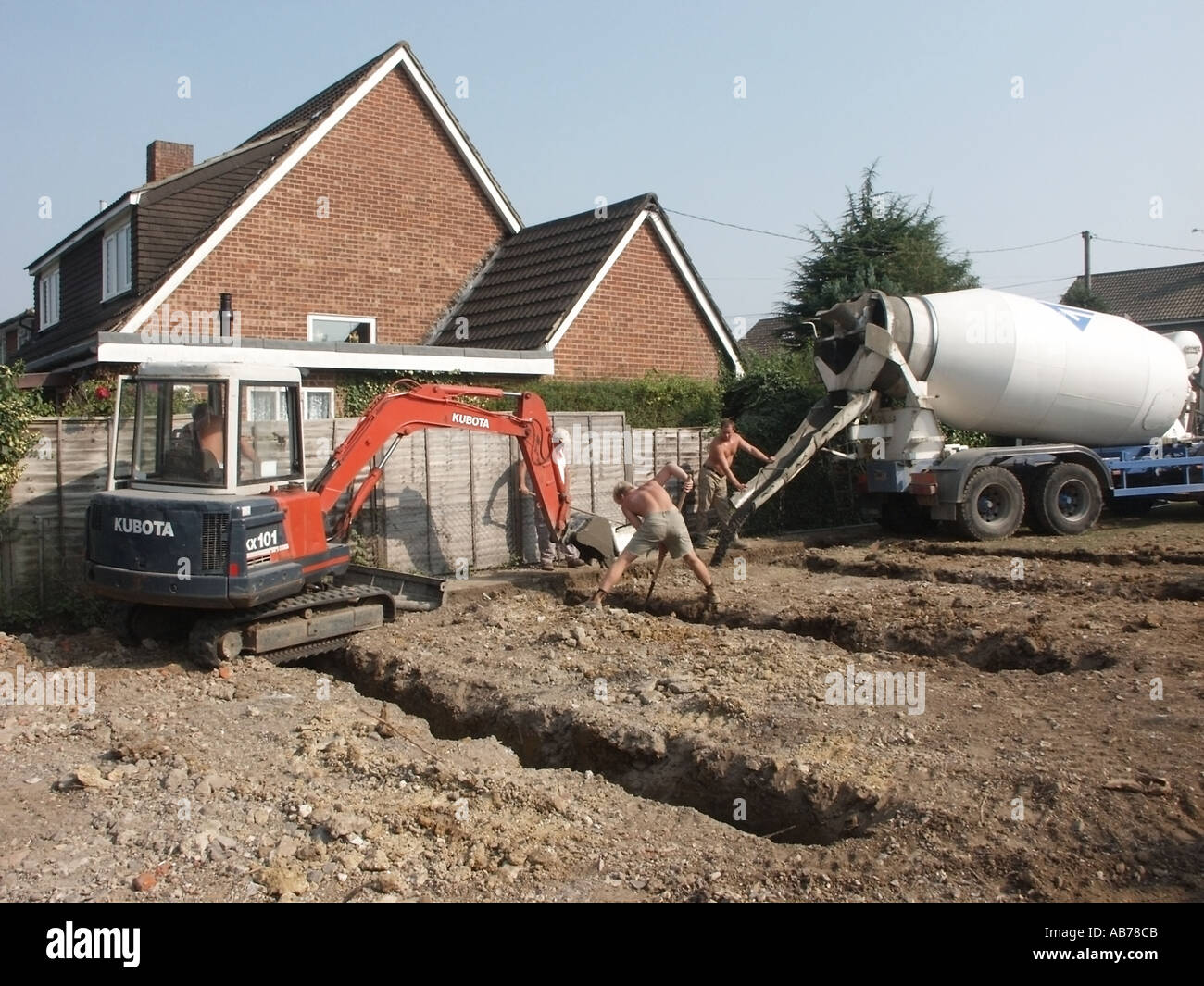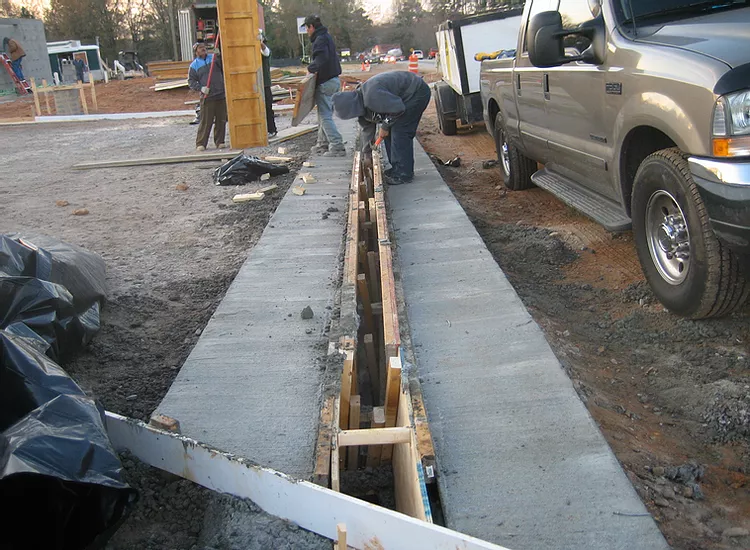Digging trenches and pouring concrete slabs are essential parts of construction. Trenches are long, narrow excavations in the ground, while concrete slabs are flat, solid surfaces made of concrete. Trenches are used to create foundations for structures, such as buildings, bridges, and roads. Concrete slabs are used to create solid surfaces for structures to sit on, such as sidewalks, driveways, and patios.
Digging trenches and pouring concrete slabs are both complex tasks that require careful planning and execution. Trenches must be dug to the correct depth and width, and the concrete must be poured in a smooth, even layer. If these tasks are not done correctly, the structure that is built on top of the trench or slab may be unstable or unsafe.
This guide will walk you through the steps involved in digging trenches and pouring concrete slabs. We will cover the following topics:
- Planning
- Excavation
- Formwork
- Placing and finishing concrete
- Curing
Planning


Excavation
Formwork


Placing and finishing concrete
Curing
Once the concrete has been finished, it needs to be cured. Curing is the process of allowing the concrete to harden and gain strength. Curing can be done by covering the concrete with a tarp or by using a curing compound.

Conclusion:
Digging trenches and pouring concrete slabs is a complex and time-consuming process, but it is an essential part of construction. Trenches are long, narrow excavations in the ground, while concrete slabs are flat, solid surfaces made of concrete. Trenches are used to create foundations for structures, such as buildings, bridges, and roads. Concrete slabs are used to create solid surfaces for structures to sit on, such as sidewalks, driveways, and patios.
Digging trenches and pouring concrete slabs are both complex tasks that require careful planning and execution. Trenches must be dug to the correct depth and width, and the concrete must be poured in a smooth, even layer. If these tasks are not done correctly, the structure that is built on top of the trench or slab may be unstable or unsafe.
Here are some of the steps involved in digging trenches and pouring concrete slabs:
Digging trenches
- Mark the location of the trench. Use stakes and string to mark the location of the trench. Be sure to leave enough space for the formwork and the concrete.
- Clear the area of any debris. Remove any debris from the area where the trench will be dug. This includes rocks, vegetation, and other objects.
- Dig the trench. Use a shovel or a backhoe to dig the trench to the desired depth and width. Be careful not to damage any underground utilities.
- Check the depth and width of the trench. Use a measuring tape to check the depth and width of the trench to make sure it is correct.
- Backfill the trench. Once the trench is complete, backfill it with the excavated material. Tamp the backfill down to ensure a firm base.
Pouring concrete slabs
- Prepare the site. Remove any debris from the area where the concrete slab will be poured. Level the ground and tamp it down to create a firm base.
- Lay the formwork. The formwork is a temporary structure that will support the concrete while it is curing. It can be made from wood, metal, or plastic.
- Place the concrete. Use a concrete mixer truck or a wheelbarrow to transport the concrete to the site. Pour the concrete into the formwork and smooth it out with a trowel or float.
- Finish the concrete. Once the concrete has been poured, it is necessary to finish it. Finishing the concrete helps to create a smooth, even surface. Concrete can be finished using a variety of tools, such as a trowel, float, or power screed.
- Cure the concrete. Curing is the process of allowing the concrete to harden and gain strength. Concrete can be cured by keeping it moist for a period of time. This can be done by covering the concrete with a tarp or by using a curing compound.
Digging trenches and pouring concrete slabs are essential parts of construction, but they are also dangerous tasks. It is important to take all necessary safety precautions when working with trenches and concrete, such as wearing safety glasses, gloves, and a hard hat.
Here are some additional safety precautions to keep in mind when digging trenches and pouring concrete slabs:
- Never work alone. Always have someone with you when you are working with trenches and concrete.
- Be aware of your surroundings. Make sure that the area is clear of any hazards before you start working.
- Use the proper tools and equipment. Do not use tools or equipment that are not in good working order.
- Follow the manufacturer’s instructions. When using any tools or equipment, be sure to follow the manufacturer’s instructions.
- Take breaks. Do not work for long periods of time without taking a break.
By following these safety precautions, you can help to prevent injuries when digging trenches and pouring concrete slabs.

